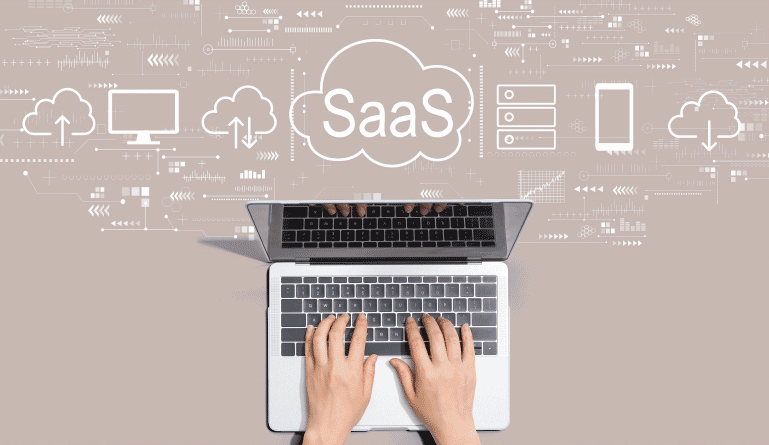SaaS has steadily gained popularity over two decades, rendering the perpetual licensing model for downloadable software obsolete with its integrated, cloud-based features, applicable to businesses of all sizes and types. However, providing complete visibility of technology infrastructure for any enterprise can be challenging.
While a SaaS tool exists for nearly every organizational asset, promising to enhance workflow efficiency, without a proper management structure and framework, repetitions, unnecessary overlaps, and fragmented authorization can amplify software bloat. Dive in to comprehend the dynamics behind SaaS bloat and strategies to mitigate it, aiming for a leaner, more efficient IT function.
Understanding the SaaS Bloat and its Challenges
Software bloat, in its simplest form, occurs when consecutive installments of a computer program become noticeably slower, consuming more memory, disk space, and computational power. In a cloud-centric era, this issue magnifies, not just within a single system, but enterprise-wide, with increasing SaaS apps draining resources. By 2022 estimates, 58% of application software expenses are allocated to cloud solutions, projected to climb to 66% by 2025. This trend is propelled by the ease with which SaaS applications can be acquired, implemented, and utilized.
While enhanced efficiency is a boon, the simplicity of SaaS procurement presents IT with various challenges. A testament to the proliferation of SaaS is that business units unrelated to IT now control more than half of a company’s systems. Shadow IT often constitutes a significant portion of a standard business’s SaaS portfolio. Consequently, IT executives may struggle to regulate SaaS spending, unable to easily identify cost-cutting opportunities. The repercussions of this lack of visibility and understanding are immense for organizations of all sizes. Research indicates that an average organization utilizes less than 50% of its app subscriptions consistently, resulting in considerable waste.
How to Minimize SaaS Bloat? Practical Tips for IT Managers
It’s vital to recognize that the cost of a tool extends beyond the license fee, encompassing training costs, customization, disruption during the transition to a new system, and overall resourcing, all of which can deplete a team’s resources. Hence, it’s imperative to trim SaaS bloat through steps like:
- Conducting Regular Audits: IT leaders should perform routine software audits to identify and assess the effective use of all SaaS apps across the enterprise. Gathering data about software adoption, usage, and user feedback will help determine which tools genuinely add value and which are redundant or underutilized. This evaluation aids in making informed decisions about maintaining, reducing, or canceling licenses.
- Understanding Usage Patterns: IT managers must provide the right features to the most suitable employee groups and establish the actual need and frequency of use within those groups. This approach assists businesses in negotiating pricing more effectively.
- Classifying Technology Bloat Based on Risk: Streamlining the technological environment and minimizing excess involve three fundamental stages of risk evaluation: critical, necessary, and high potential.
- Implementing a SaaS Authorization Process: To prevent SaaS overload, especially in larger or remote teams, implement a robust authorization mechanism. Ensure there are straightforward steps and procedures for recording approvals and denials.
- Performing Regular Reviews and Vendor Audits: Periodically assessing current SaaS providers and contracts ensures they align with organizational requirements, helping to identify bloat before it burdens your organization.
Why Controlling SaaS Bloat is Crucial in 2024
As companies embrace digitization, unused SaaS apps have surfaced as a significant issue, a continuation of the pandemic era, which witnessed expedited and often unplanned technology adoption. When SaaS bloat surpasses a certain threshold, it can lead to unnecessary IT spending, increased security risks, and the possibility of vendor lock-in.
- Unnecessary IT spends: Excessive spending on SaaS applications can lead to budget overruns and financial distress for an organization. It’s essential to consider the ripple effect of this on your organization’s digital transformation blueprint and resource allocation.
- Increased security risks: If you fail to control SaaS proliferation, your business’s use of shadow applications is likely to increase. These unauthorized applications may not satisfy the organization’s security and compliance norms, therefore heightening your vulnerability to data breaches.
- Possibility of vendor lock-in: Organizations frequently renew and bind themselves into extended agreements with vendors who, unfortunately, deliver inadequate value. This makes it challenging to transition to an economically feasible solution even if the issue is identified.
In Summary: Trimming the SaaS Bloat
Cloud-based SaaS platforms, fundamental to most technology frameworks today, offer substantial advantages over the traditionally accepted perpetual license software model. However, without diligence, you may accumulate an excess of licenses, some of which might be unnecessary or excessive, even ending up with a SaaS environment cluttered with shadow applications and unauthorized licenses. The five steps discussed will aid in slicing through software bloat, rendering your IT environment leaner, more efficient, and cost-effective. Additionally, actively avoiding the purchase of unsuitable software products—those without sufficient integrations, unnecessary features, or a complex user interface—is crucial to pre-empt and prevent SaaS bloat from becoming a burden.
Explore our cloud cost savings framework for CIOs for further advice on reducing bloat.
Other Related Articles:
SaaS Accounting: Benefits and Best Practices for Finance Teams







